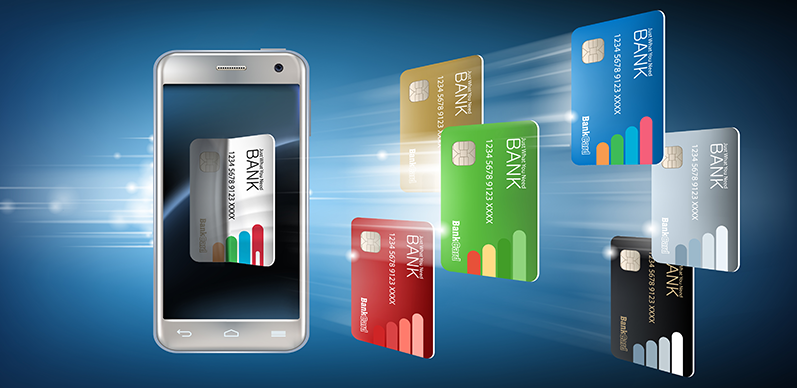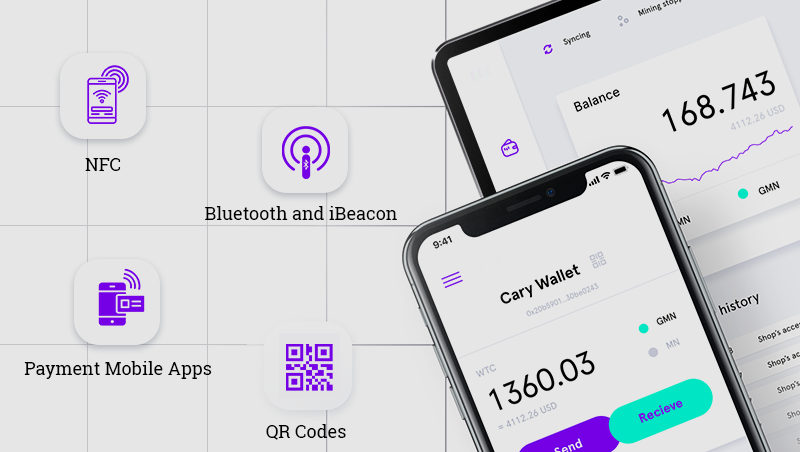
Digital payments are considered one of the fastest growing market globally. According to Statista, worldwide mobile payment revenue accounted for 450 billion in the year 2015 and is predicted to gain momentum to touch more than 1 trillion US dollars in 2019. It is widely accepted by the respective governments of various nations who are now formulating policies to promote it. Digital payments give you a convenient and secure way to transact. eWallet mobile apps facilitate a wide array of options for a user including shopping, ticket booking, mobile recharges, and much more. This is how the idea of eWallet apps was born. If you are the one aiming to launch an eWallet app of your own, here is an extensive guide from the Matellio experts.
What is an eWallet?

eWallet mobile apps are nothing but digital alternatives to store and use various payment methods like credit/ debit card or digital currencies. They make the transaction process much more convenient and simple, thus are immensely popular.
Which Industries can Benefit from an eWallet Mobile App?
The launch of online payment apps like Google Pay, Apple Pay, and Samsung pay sparked the era of eWallet mobile apps. However, being related to money does not mean it only stands at the forefront of the financial industry alone. Multiple other sectors are reaping the benefits of eWallet apps. Here are some of them:
- Retail and eCommerce Industry: Retail and eCommerce industry tends to harness the benefits of a payment app to the fullest. Integrating a secure payment gateway or an eWallet application helps the eCommerce businesses to offer their customers with customized offers, loyalty cards, bonuses, and a lot more.
- Financial Organizations: Users using financial apps can now store their card details in the mobile apps and use them on the go. It not only takes care of the user’s convenience but also ensures safety from the thefts, etc.
- Telecommunication Companies: Be it sending money to someone, or paying bills easily, eWallet apps have it all covered for the telecom users. They can now recharge their numbers and also earn great cashback making the overall experience more rewarding.
- Transportation and Logistic Businesses: Paying for the cab rides does not require you to carry loads of change to ensure hassle-free payment. After all, digital payment apps are here. Most of the cab services have already integrated payment systems to their apps to offer their customers with the ease of use.
- Food, Grocery, and Event-based Companies eWallet apps make paying for the restaurant bills, movie tickets, and even at the online food ordering apps and supermarkets, easier than it sounds.
How does an eWallet Work?
Users can sign in into their mobile app by using a password or PIN code. Some of the mobile applications also offer high-end security in terms of a fingerprint scanner. They can then choose the pre-registered card they wish to make payment from or link another one. Mobile apps generally make use of the Near Field Communication (NFC) for transaction data exchange. This requires businesses to set up Point of Sales (PoS) supporting NFC to receive payments through their smartphones.
There are four primary technologies to enable POS mobile wallet payments:

- NFC (Near Field Communication): NFC is a contactless remote technology that functions up to a distance of 10 cm. It allows secure payments between smartphones and PoS- devices. Although it appears very much like Bluetooth, it offers benefits in terms of shorter connection time which is as less as one-tenth of a second.
- Bluetooth and iBeacon: This combination gives you an alternative iBeacon is an alternative to transmit data without using internet data for the same. What else? They do not have to fiddle with their cards and coupons during checkout. If you have a Bluetooth 4.0-enabled smartphone, you can easily connect to BLE-transmitter known as Beacon. An iBeacon-enabled POS can read the user details to make them automatically available.
- QR Codes: QR Codes are highly valued as a great alternative to NFCs. Multiple giants including Starbucks and LevelUp leverage QR codes to ensure convenient transactions for the customers as well as themselves. Users can simply scan the QR codes stored on the cloud while checking out.
- Payment Mobile Apps: Many retail apps are now joining hands with the established payment apps to facilitate online payments. Some of the popular options available include PayPal, Apple pay, and Google Pay, besides others.
Tips and Tricks to Get a Secure eWallet App Up and Functioning into the Market
eWallet mobile apps are nothing but a giant roadmap of small steps. Every step is crucial to ensure that your app has the potential to disrupt the market. Let’s go through some of the tips and tricks to get the best eWallet App for your users.
1: Don’t leave your homework behind
You cannot simply decide to get a mobile app developed and jump without preparation. Dig inside the existing apps in the market and what are their pain points. After all, we do not want to repeat their mistakes, do we? Once done, go through the top performing mobile apps in the market and record the features that make them stand out.
2: Establish the purpose of your app smartly
Create the app in a way that makes it irresistible for the users. Decide the problem that you want to address and identify the users who’ll benefit from it. Make sure your app marketing campaign is designed to clearly focus on potential clients while presenting the clients with content relevant to them smartly highlighting the app’s purpose.
3: Choose Your Wallet Type
Once you are done with the initial preparations, it’s now time to choose the eWallet type. Some of the common ones have been given here for you:
- Wallets that use the carrier for the transactions
- Ones that use SMSes to initiate the transfers
- Wallets that use internet for transactions
- Wallets that permit contactless payments via NFC and other modes
4: Give Your Users Engaging Experience through Intuitive User Interface Well, the value of the excellent user interface and user experience can never be neglected. Engage your users with best-in-class UI/ UX enabling value in each swipe, touch, and click. Let your brand credibility talk through a clear, catchy, and memorable set of icons and content.
Also Read- B2B Mobile App Development: A Complete Guide
Key Features to Include in an eWallet
Your eWallet application must be enriched with certain features, depending upon the user’s needs, to ensure its popularity of the application. Some of such functionalities as mentioned below:
- User registration
- Bank account authorization
- Ability to check the balance
- Easy and secure money transfer
- Bill payments
- Offers and discounts with the convenient redemption
Additional Features
Not only do eWallets offers a great alternative to traditional payment methods, but also help your business strengthen the client base with loyal customers. Here are some of the features that you can add to your application to give an extra edge:
- Loyalty cards
- Reward and offers
- Loyalty card with promotional offers
- Gift vouchers
- Pop-up notification
- Exclusive offers
- Geo-location
- Membership discounts
Security Comes First when Talking About eWallet Mobile App Development
Users are very particular about security when it comes to certain things, and money is undoubtedly one of them. While the internet is full of people trying to breach into your security, making your app, it is vital for you to give your apps the edge that they need in order to ensure high-end security. Here are some of the technologies that can provide a secure backbone to your idea:
- Point to Point Encryption: This is the reason for the robust security provided by apps like Paytm or Google Pay. The process is simple here. Everything starting from the single Swype on the mobile app screen to final funds transfer or authorization is protected by encryption.
- Tokenization: Tokenization offers one of the most secure alternatives by using the reliable data connection. It does not require the buyer to provide an entire set of payment details along with the card. Thus, the card information is encrypted and converted into a token that looks similar random number.
- Passwords: Passwords are nothing new to the digital world. But having your transactions protected by passwords is not just enough. You also need to make sure that user passwords are strong enough to stay aloof from the security threats. Additionally, you can also enable your apps to ensure protection through biometric support.
Take Home Message
Mobile wallets do not just let you carry out secure money transactions but also save user’s time. Besides, they have also reduced investment shortcomings considerably. Large as well as new businesses can now reach out to their customers using smartphones. eWallets are no more merely a trend; instead, they are need of the hour. However, reaping benefits from the fast-evolving market, you need to make the sure flawless implementation of features and functionalities.



